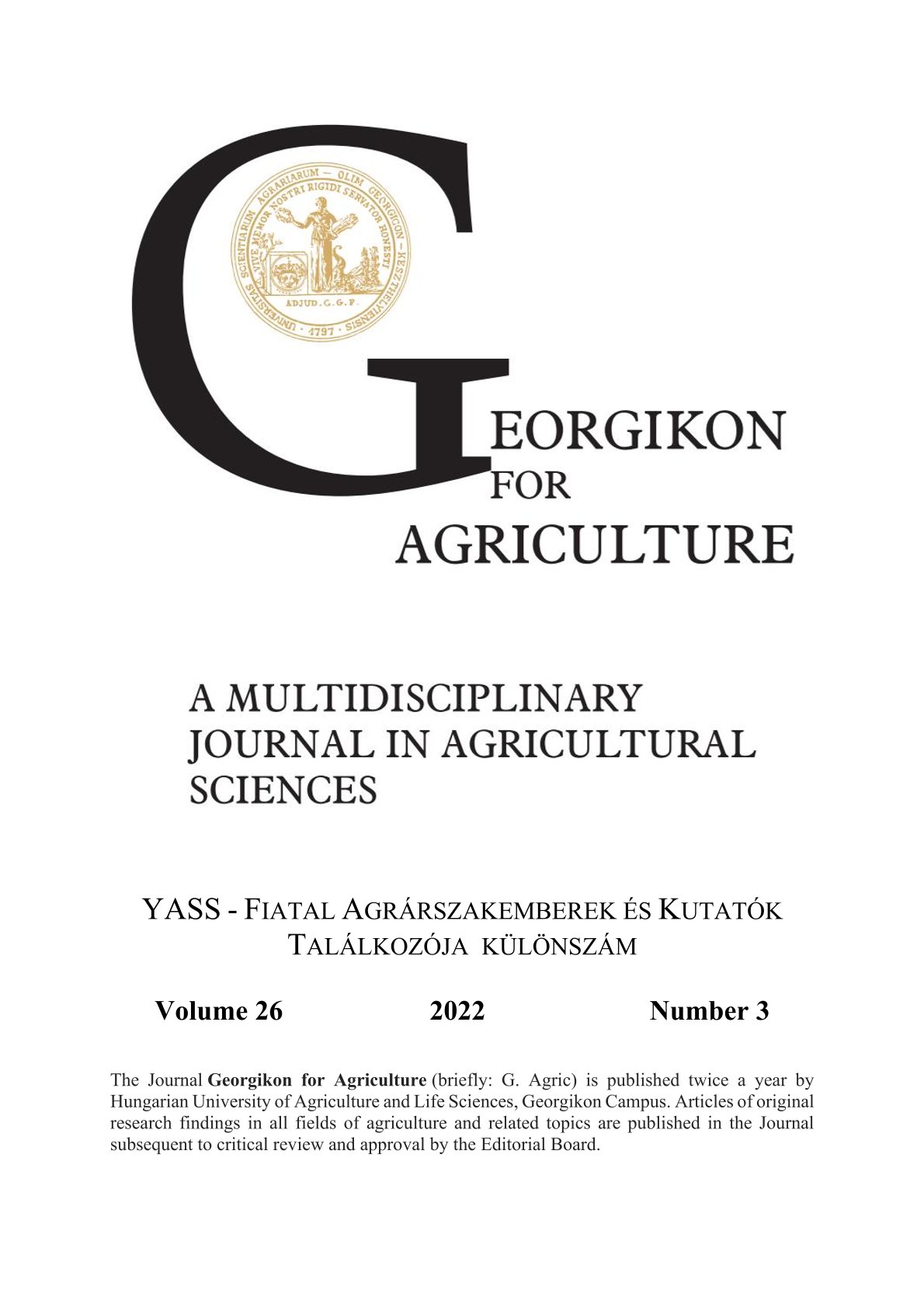Estimation of areal evapotranspiration in soybean canopy using the Bowen method
Keywords:
soybean, field experimten, daily evapotranspiration, Bowen-stationAbstract
Our studies were carried out in the summer of 2020 at the Agrometeorological Research Station of the Georgikon Campus of the Hungarian University of Agriculture and Life Sciences with a Bowen-station deployed in a soybean canopy. The meteorological parameters measured in every 10 min were as follows: within canopy air temperature and humidity, above-canopy air temperature and humidity measured at two levels, and wind speed, as well as soil temperatures measured at several levels. We also completed our measurements with weekly stand height and leaf area measurements (LAI), which are important for the model. Daily evapotranspiration (ET) was calculated from the 10-minute microclimate data. The evapotranspiration modelled with Bowen's ratio in the 2020 measurement season is a state-of-the-art procedure. A Bowenstation provides a relatively inexpensive solution for estimating the spatial evapotranspiration of field crops.
References
Anda, A., Soós, G., Menyhárt, L., Kucserka, T., Simon, B. 2020. Yield features of two soybean varieties under different water supplies and field conditions. Field Crops Research 245. 107673. https://doi.org/10.1016/j.fcr.2019.107673
Burba, G. G., Verma, S. B., Kim, J. 1999. Surface energy fluxes of Phragmites australis in a prairie wetland. Agricultural and Forest Meteorology 94. 31–51. https://doi.org/10.1016/S0168-1923(99)00007-6
INTERNET: A szója termesztéséről – gazdálkodóknak. https://portal.nebih.gov.hu/-/a-szojatermeszteserol-gazdalkodoknak (2020.10.30, in Hungarian)
Irmak, S., Sharma, V. 2015. Large-scale and long-term trends and magnitudes in irrigated and rainfed maize and soybean water productivity: grain yield and evapotranspiration frequency, crop water use efficiency, and production functions. Transactions of the ASABE 58(1), 103–120. https://doi.org/10.13031/trans.58.10784
Irmak, S. 2017. Evapotranspiration basics and estimating actual crop evapotranspiration from reference evapotranspiration and crop-specific coefficients. Crop, Irrig. Eng Nebraska Extension. http://extensionpublications.unl.edu/assets/pdf/g1994.pdf.
Massman, W. J. 1992. A surface energy balance method for partitioning evapotranspiration data into plant and soil components for a surface with partial canopy cover. Water Resour. Res. 28(6), 1723–1732. https://doi.org/10.1029/92WR00217
Monsi, M., Saeki, T. 1953. Über den Lichtfaktor in den Pflanzengesellschaften und seine Bedeutung für die Stoffproduktion. Jpn. J. Bot 14, 22–52. (In German)
Payero, J. O., Melvin, S. R., Irmak, S. 2005. Response of soybean to deficit irrigation in the semi-arid environment of West-Central Nebraska. Trans. ASAE Am. Soc. Agric. Eng. 48, 2189–2203. https://doi.org/10.13031/2013.20105
Sang‐Ok, C., Horton, R. 1987. Soil heat and water flow with a partial surface mulch. Water Resources Research 23(12), 2175–2186. https://doi.org/10.1029/WR023i012p02175
Downloads
Published
Issue
Section
License
Copyright (c) 2022 Soós Gábor

This work is licensed under a Creative Commons Attribution-NonCommercial-NoDerivatives 4.0 International License.
Cikkre a Creative Commons 4.0 standard licenc alábbi típusa vonatkozik: CC-BY-NC-ND-4.0. Ennek értelmében a mű szabadon másolható, terjeszthető, bemutatható és előadható, azonban nem használható fel kereskedelmi célokra (NC), továbbá nem módosítható és nem készíthető belőle átdolgozás, származékos mű (ND). A licenc alapján a szerző vagy a jogosult által meghatározott módon fel kell tüntetni a szerző nevét és a szerzői mű címét (BY).




